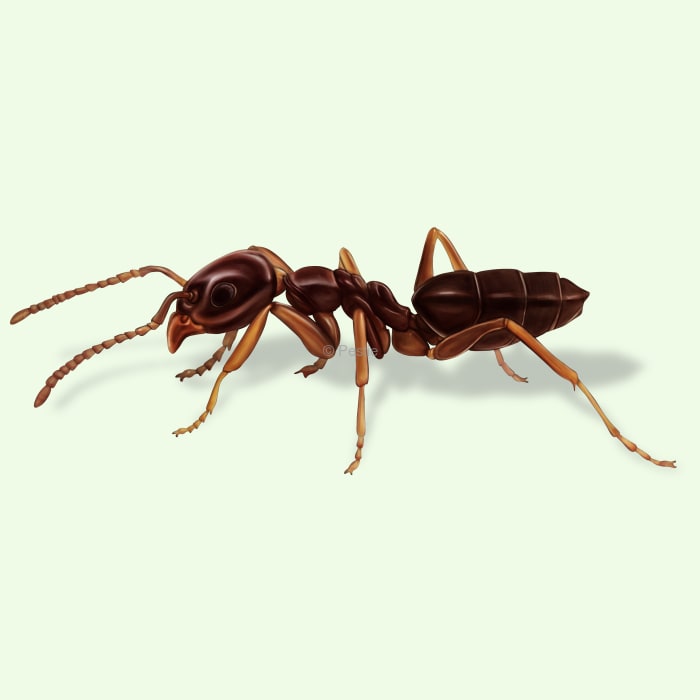How to identify and treat odorous house ants

Strategies for living ant-free among odorous house ants
You're probably wondering how they got into your house again, right? No matter how much you keep things clean, those tiny black ants always find a reason to invade your home, especially your kitchen.
That long parade of ants could be odorous house ants on the march to score the latest treat you might have accidentally left out or dropped somewhere unseen.
Odorous house ants are tiny, fast-moving insects with an insatiable sweet tooth. You might find them parading around your kitchen, especially if anything sticky or sugary is left out. If you notice these ants frequently or in large numbers, it's probably a sign that they've likely set up camp nearby, attracted by the promise of food.
And why are they odorous? It has to do with the way they smell when crushed. Some say they smell like rotten coconut or blue cheese. Either way, they aren't a topping you want to see on any food in your home.
Their colonies can house anywhere from hundreds to tens of thousands of ants. Some colonies consist of multiple nests and sometimes multiple queens, making them a serious nuisance that is difficult to eliminate.
How to identify odorous house ants
To the naked eye, odorous house ants will look like any other small black ant. They are often rusty brown or black and can move rather quickly. If you have a magnifying glass or microscope, you might be able to tell that their abdomen extends over their thin waist.
But honestly, that's a lot of work just to tell that you have ant problems. One of the fastest ways to tell if you have odorous house ants in your home is to smash one and then smell it! If it gives off that blue cheese or rotten coconut smell, then you know what you are dealing with.
How big are odorous house ants?
These little guys are only about 1/16 to 1/8 inches long.
What other ants look like an odorous house ant?
There are a lot of different ants that could invade your home, searching for their next meal. These could include:
- Little black ants
- Carpenter ants
- Argentine ants
- Pavement ants
These ants are also dark in color, but when crushed, they smell more acidic or musty, unlike the rotten coconut smell of odorous house ants.
Where do odorous house ants live?
These ants are widespread across the United States, adapting well to various indoor and outdoor environments. They're often found in kitchens and bathrooms, attracted to moisture and food residues. They will build their nests in exposed soil or under objects like rocks and logs.
How to get rid of odorous house ants
There are two really good ways to prevent ants from making your home their hunting grounds.
First, clean up any sticky or sugar food around your home. Odorous house ants can quickly scout anything sweet and send foragers out to collect the bounty in no time. Additionally, these ants will thrive near moisture, so try to eliminate any standing water or leaks.
Second, you must seal any gaps or cracks around your home. Even if you feel like your home is watertight, these tiny ants will exploit any hole or gap you might have missed.
If you find yourself already battling with ants, try these control methods:
- Baits – these are carried back to the nest and help eliminate the colony.
- Don't wait – The longer you put off controlling the ants, the bigger the colony gets, making it that much harder to eliminate.
- Try a DIY, pro-grade pest control plan that Pestie offers. Get your customized plan here.
Treat odorous house ants with Pestie
If you're still having trouble keeping odorous house ants away, the best option is to use a pro-grade, effective pest control solution like Pestie.
Pestie is a do-it-yourself pest control solution that's specially designed to keep odorous house ants and other pests away from your home.
With Pestie, you can rest easy knowing that your living space is protected and free of creepy crawlies. And the best part? It's designed for people, pets, and the planet, so you can say goodbye to harsh chemicals and hello to peace of mind!
- Save hundreds compared to traditional annual pest plans
- People, pet, and planet-friendly
- Pro-grade customized formulas
Quick facts
- Scientific name
Tapinoma sessile
- Other common names
Sugar Ant, Stink Ant, Coconut Ant








